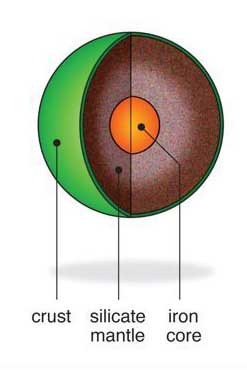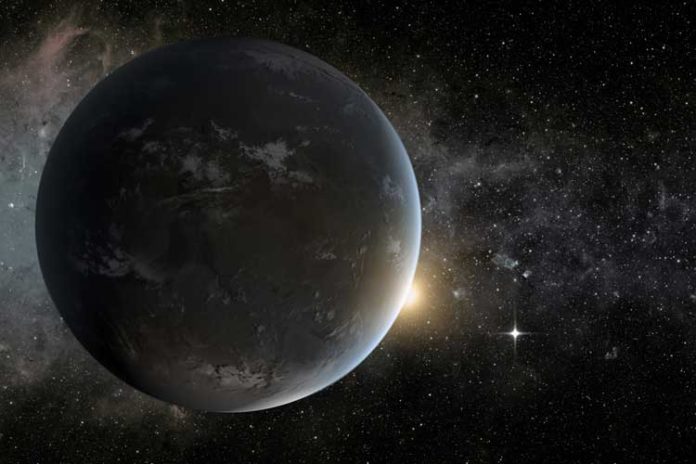Earth has a magnetic field – it’s what makes compasses align north-south and lets us navigate the oceans. It also protects the atmosphere, and thus life, from the sun’s powerful wind.
Be that as it may, what about Earth-like planets in the galaxy? Do they also have magnetic fields to ensure rising life?
Another investigation sees one kind of exoplanet– super-Earths up to five times the extent of our own planet – and presumes that they likely do have a magnetic field, however one created in an absolutely novel manner: by the planets’ magma oceans.
The astounding disclosure that gradually beating melted rock at or under the surface can produce a strong magnetic field additionally proposes that in Earth’s initial years, when it was to a great extent a lump of melted rock, it likewise had a magma-created magnetic field. This was notwithstanding its present-day field, which is created in the fluid iron outer center.
The link between a planet’s interior and its magnetic field also provides a way for astronomers to learn about the makeup and ages of exoplanets too far away to visit.
Burkhard Militzer, a UC Berkeley professor of earth and planetary science said, “This is a new regime for the generation of planetary magnetic fields. Our magnetic field on Earth is generated in the liquid outer iron core. On Jupiter, it arises from the convection of liquid metallic hydrogen. On Uranus and Neptune, it is assumed to be generated in the ice layers. Now we have added molten rocks to this diverse list of field-generating materials.”
“This is far in the future, but if someone makes an observation of an exoplanet and they find a magnetic field, that may be an indication that there is a magma ocean, even if they cannot see this directly.”
The outcomes may have suggestions for chances for life on different planets. As magma oceans cool from the top, a surface neighborly to life could appear while the melted mantle continues to churn.
Former UC Berkeley postdoctoral fellow François Soubiran, now at the École Normale Supérieure in Lyon, France said, “A magnetic field is helpful in protecting a planetary atmosphere from being blown away by the stellar winds. Most of the super-Earths we are detecting now are very close to their host stars and exposed to very strong stellar winds. Thus, the possibility for a magnetic field to exist is definitely a key component in the evolution of the planet and its habitability.”
Earth’s internal dynamo
The magnetic field of Earth today is produced in the liquid iron external center, where rising and sinking masses of electrically leading fluid iron, joined with the planet’s spin, make a dynamo and an industrious magnetic field.

In any case, the rough Earth was molten after its underlying arrangement 4.5 billion years prior, and a few layers may have molten and convecting – like boiling water, just slower – for many years after its birth. Could the gradually convecting magma ocean have created a magnetic field much the same as the one produced in the iron core today?
The same question arose after super-Earths were discovered around other stars. Super-Earths are so massive that their interior, the mantle, should remain liquid and convecting for a few billion years after formation.
Scientists accessed atomic-scale computer models of minerals that allowed them to calculate the conductivity of, in this case, quartz (silicon dioxide), magnesia (magnesium oxide) and a silicon-magnesium-oxide (post-perovskite), all of which are common in rocks on Earth, the moon and probably all of our solar system’s planets.
Subsequent to performing long figurings for every one of the three, they found that these silicates turn out to be humbly leading when they change from strong to liquid at high temperatures and pressures. When they connected the conductivities to models of Earth’s interior, they found that the stones were adequately directing to support a dynamo and accordingly a magnetic field.
Soubiran said, “Our calculations showed that the disorganized structure of the liquid helped the electrons become conducting. Liquid silicates at 10,000 Celsius and 10 million atmospheres of pressure have only about one-hundredth the conductivity of liquid iron, for example.”
“Planets rotating with a period of two days or more would generate an Earth-like magnetic field: a dipole field with a clear north and south. Slower rotation, however, could create a more disorganized field that would be harder to detect from afar.”
Bruce Buffett, a UC Berkeley expert on the dynamics of Earth’s interior who was not involved in the research, said that planets can generate magnetic fields only if they have the right balance of electrical conductivity and fluid velocity to create the feedback necessary to sustain a magnetic field.
“The expectation of many geophysicists was that, at least under Earth conditions, the conductivity of liquid silicates would fall more into the category of, well, if you had really, really large fluid motions to compensate for a low conductivity, you might have a magnetic field,” said Buffett, a professor of earth and planetary science.
“This is the first detailed calculation for higher temperature and pressure conditions, and it finds that the conductivities appear to be a little bit higher, so the fluid motions you would need to make this all work are maybe a little bit less extreme.”
Scientists have published their findings Sept. 24 in the journal Nature Communications.
